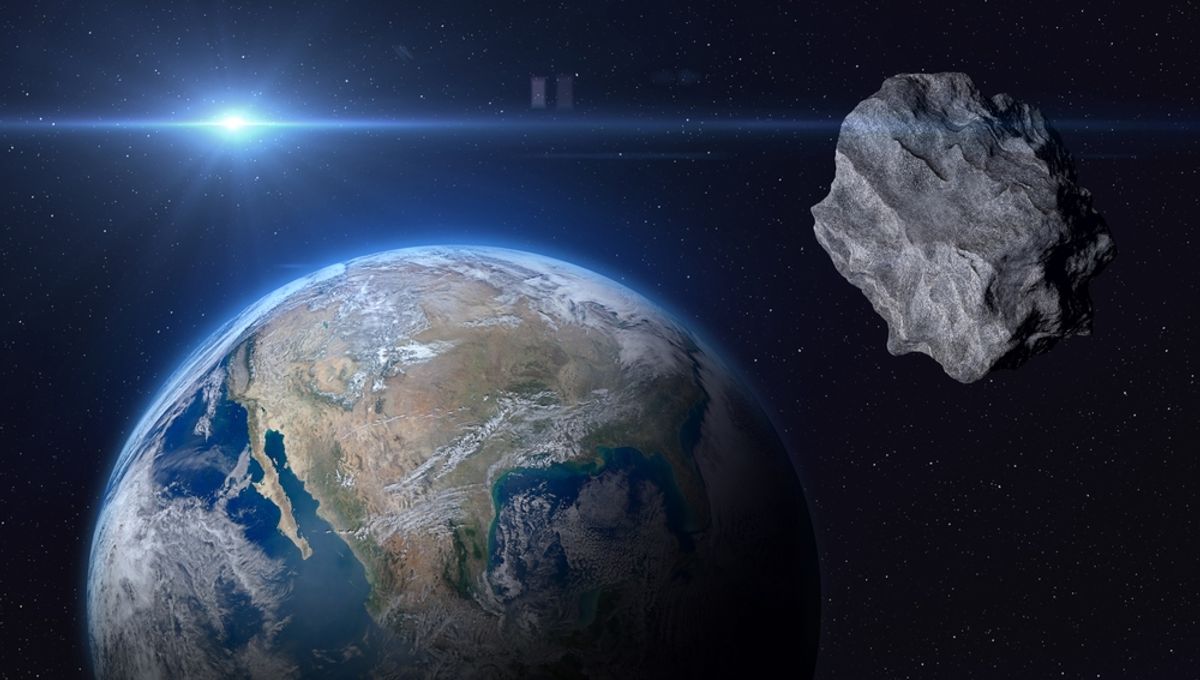
On July 13, an asteroid passed the Earth at a distance of 100,000 kilometers (60,000 miles). Not only was humanity entirely unaware it was coming, no one even noticed until two days later.
If this had been something too small to do damage – like the famous “half-a-giraffe” that may have slashed down off Iceland – then this might barely be worth noticing. However, while the object in question was certainly no dinosaur-killer, at around 60 meters (200 feet) long as reported by Live Science, it was large enough to do tremendous damage if it had landed near a city.
Dozens of asteroids make their closest approach to Earth each week, something we have only known after improvements in sky monitoring in the last few decades. Although it’s possible to make scary-sounding stories out of this, most of them miss by a million miles or more. To be considered close among the asteroid-watching community, a visitor needs to pass within the orbit of the Moon.
The object, named 2023 NT1, certainly did that. Indeed, at closest approach, it was only at a quarter the distance of our natural satellite and less than three times as far off as the devices we put in geostationary orbit. As noted, it was also larger than the bulk of objects that get recorded by the International Astronomical Union’s Minor Planet Center. In the current fashion of using animals as units of measurement, this one was about as long as four sperm whales (hold the petunias), but it probably weighed ten thousand times as much.
More relevantly, this object was about 30 times as massive as the one that exploded over Chelyabinsk in 2013. Considering that managed to injure 1,500 people, it’s clear that objects this size can do plenty of damage.
These days, anything this large is usually detected long before it reaches our vicinity. Depending on how long before, that might give us the chance to deflect, or perhaps evacuate the likely landing zone. If expected to hit an ocean, tsunami warnings could be issued.
However, 2023 NT1 avoided all that using a tactic so old that squid have adopted it – attacking with the Sun behind so you’re almost impossible to see. Consequently, we had no warning. Even when the asteroid rushed past at around 40,000 km/h (24,855 miles per hour), no one noticed until two days later, when it was picked up by a South African member of the Asteroid Terrestrial-impact Last Alert System (ATLAS). More than a dozen other telescopes independently reported sightings to the Minor Planet Center thereafter
In 2030, the European Space Agency plans to place the NEOMIR mission in a location that will allow it to spot asteroids that are in the solar blind spot from Earth – but until then, events like this could continue to take us by surprise.
2023 NT1 will not trouble us again for a long time, however. Its orbit takes 2.6 years, during which time it gets well beyond the orbit of Mars. By the time it returns the Earth will be in a very different spot. The next time it is predicted to come into our general vicinity is 2044, but even that is unlikely to be close.
[H/T LiveScience]
Source Link: An Asteroid Just Passed Closer To Earth Than The Moon And We Only Noticed Afterward